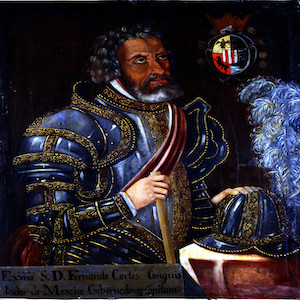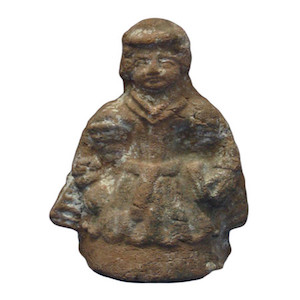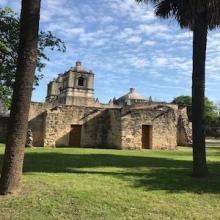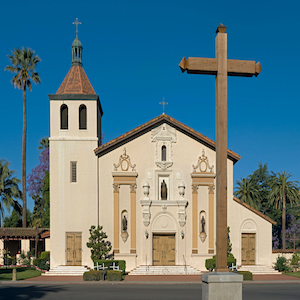Early Modern (1450 CE - 1800 CE)

Seventeenth Century Metal Helmet
This helmet dates to the seventeenth century, and has been restored. It belonged to the Governor and Captain of the Kingdom of New León, Martín de Zavala. This territory spanned the northwest region of modern-day Mexico.

Portrait of Hernán Cortés
Hernán Cortés, a central figure in the establishment of Spanish rule in the Americas, is the subject of this painting. Throughout his career, he led several voyages back and forth between Spain, the Carribean, and Mexico.

Portrait of Gaspar Sánchez
This seventeenth century painting depicts the Jesuit theologian Gaspar Sánchez. He was born and educated in Spain, but his published works were distributed throughout the Spanish world. For example, the Jesuit library of Tepotzotlán has multiple volumes.

Portrait of Francisco López de Solís
This partially damaged painting depicts Francisco López de Solís, who occupied many posts throughout his career. He served as a lawyer for the Fisco del Santo Oficio, a judge on the high court of both the Philippines and Guatemala.

Female Terracotta Figure
This small piece measures only 9.8 centimeters tall. It depicts a clothed female figure, who appears to be wearing some kind of European-style belted dress with a collar.

Cuauhtémoc prisionero
This painting depicts a scene from the conquest of Mexico City by Spanish soldiers (led by Hernán Cortés) in the early sixteenth century. It appears to have belonged to a larger work, but this section is all that remains.

Chive Pocket Watch (Reloj de bolsillo tipo cebollón)
This object dates from the seventeenth century. It features a glass front and silver casing. The inscription reads "Tompion London," meaning that it was manufactured in England’s capital city. Tompion began producing this kind of pocket watch around 1658 with inventor Robert Hooke.

Source Collection: Analyzing Historic Churches in the Southwestern US
Today, the US-Mexico border stretches along the path of the Rio Grande River. However, much of the territory that now makes up the Southwestern states of the US once belonged to the Spanish Crown. Studying the historic churches of Texas helps reveal this history.

La Exaltación de la Santa Cruz Mission
Founded in 1791, the La Exaltación de la Santa Cruz Mission was a Spanish colonial church in Santa Cruz, California. The objective of this institution was the evangelization of the nearby indigenous communities. They included the following peoples: Ohlone, Costanoan, Miwok, and Yokuts.

Misión Santa Clara de Asís
Located today on the Santa Clara University campus in Santa Clara University, the Mission Santa Clara de Asís was originally founded in 1777. Like many other missions nearby, it was created by Franciscan missionaries with the permission of the Spanish Crown.